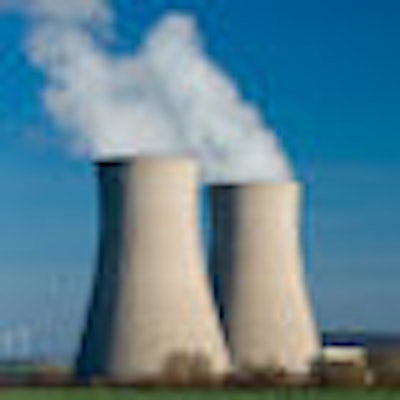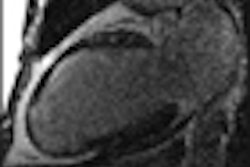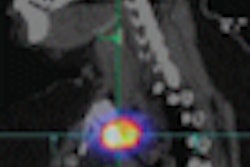
A radiopharmaceutical company and a firm that manages nuclear reactor facilities are pairing up to address one of the thorniest problems in medical imaging: securing a stable, U.S.-based source for medical radioisotopes.
Covidien of Hamilton, Bermuda, this week announced a deal with Babcock & Wilcox (B&W) Technical Services Group of Lynchburg, VA, to take the first steps to help alleviate the ever-lingering threats to the global medical isotope supply. The two companies are basing their partnership on a new type of reactor technology that is less complex, cheaper, and more environmentally friendly than traditional reactors used for isotope production.
If successful, Covidien and B&W believe the technology could supply more than 50% of U.S. demand for molybdenum-99 (Mo-99). The technology could even be used to produce radioisotopes other than Mo-99.
B&W's technology
The partnership would use B&W's aqueous homogeneous nuclear reactor technology, also known as a solution-based reactor, which was patented in 1997, said Evans Reynolds, medical isotopes production system program manager at B&W. The technology employs low-enriched uranium (LEU) and generates approximately 1% of the radioactive waste produced by current reactor production of Mo-99, most of which uses a process based on weapons-grade high-enriched uranium.
Industry observers have been looking at low-enriched uranium reactors as an alternative to the current reactor technology for producing Mo-99. A report issued earlier this month by the U.S. National Academy of Sciences discussed the relative merits of LEU technology, although it also pointed out the challenges in converting U.S. reactors to LEU-based production.
Reynolds said that B&W has becoming increasingly interested in medical applications as it has refined its LEU technology.
"We have been, over the last several years, accelerating our work on it and becoming more involved in the pharmaceutical industry, which resulted in the [Covidien] agreement," Reynolds said.
Due to the nature of the technology, an aqueous homogeneous reactor operates at a much lower temperature and with less required pressure than conventional reactors. It has a 200-kW power level, which also is considerably less than the 10 MW to 40 MW produced by other research reactors. The unit is approximately 2 ft in diameter and 4 ft in height.
"We were attracted to the benefits of the technology, being a smaller-scale operation and [similar to] what is being done with research reactors," said Dale Simpson, Covidien's principal research and development engineer for the project. "It is a more cost-effective approach to producing Mo-99, generates less waste, and is more environmentally friendly. It also supports [U.S. nuclear] nonproliferation efforts."
B&W's solution-based technology can manufacture other medical isotopes, such as iodine-131. Whether the B&W-Covidien collaboration will expand to capabilities beyond Mo-99 has not been determined.
"We haven't decided yet whether or not it is commercially viable to install the processing equipment necessary to separate and market [other isotopes]," Reynolds said, "but that is not to say we never will. We just haven't looked at it much yet, since our primary thrust is Mo-99."
Supply diversity
One of the benefits of producing Mo-99 in the U.S., of course, would be establishing the first and only domestic production site for the medical isotope, which would offer new supply options for patients and nuclear medicine practitioners. Mo-99 supplies in the U.S. and Europe have been interrupted repeatedly in recent years by reactor shutdowns and other events at the handful of facilities that currently produce the radioisotope.
"Unfortunately, in the immediate short term, this will take a few years to develop and commercialize," Simpson said. "There will not be an immediate impact on the supply issue, but we are working with our customers to minimize any shortage they may have."
B&W and Covidien expect that it will take five to six years before U.S. production of Mo-99 comes to fruition. The companies are exploring suitable locations for the solution-based reactors; one advantage is that the reactor facilities would be smaller and more compact because of the simpler technology, compared to what's currently in production.
According to the recent National Academy of Sciences report, Covidien's Mallinckrodt subsidiary and MDS Nordion of Ottawa, Ontario, Canada, currently supply all of the Mo-99 used in the U.S., distributing more than 1,000 six-day curies of the medical isotope per week.
Mallinckrodt produces approximately 40% of the U.S. supply and approximately 25% of the world supply. Production is based at the High Flux Reactor in Petten, Netherlands, in a joint venture with the facility operator, the Nuclear Research and Consultancy Group (NRCG).
Reactor location
Reynolds said that B&W would start with a single nuclear facility that would house three or four of the compact reactors. "We don't know the final configuration," he added. "We are working on that development right now, but it will be a small nuclear reactor facility with the reactor plant processing hot cells."
Covidien's Simpson said the solution reactors could be housed in an existing facility that is "conducive to this type of technology to minimize the time and investment needed" to begin production of Mo-99.
Covidien "is well familiar with the arena of U.S. Food and Drug Administration [FDA] approvals and protocols and the necessary procedures to make sure the product continues to meet FDA requirements," Reynolds noted. "Furthermore, they own and operate a Mo-99 processing facility in the Netherlands. Since our processing from the reactor downstream is very similar to current technology, their technical insights will be very helpful."
By Wayne Forrest
AuntMinnie.com staff writer
January 28, 2009
Related Reading
Report: Use of low-enriched uranium in medical isotopes is feasible, January 15, 2009
NRCG reactor will be down longer, December 22, 2008
Belgium to restart medical isotope production, November 5, 2008
Dutch reactor won't restart until February 2009, October 15, 2008
Dutch reactor opening delayed another month, September 19, 2008
Copyright © 2009 AuntMinnie.com



















